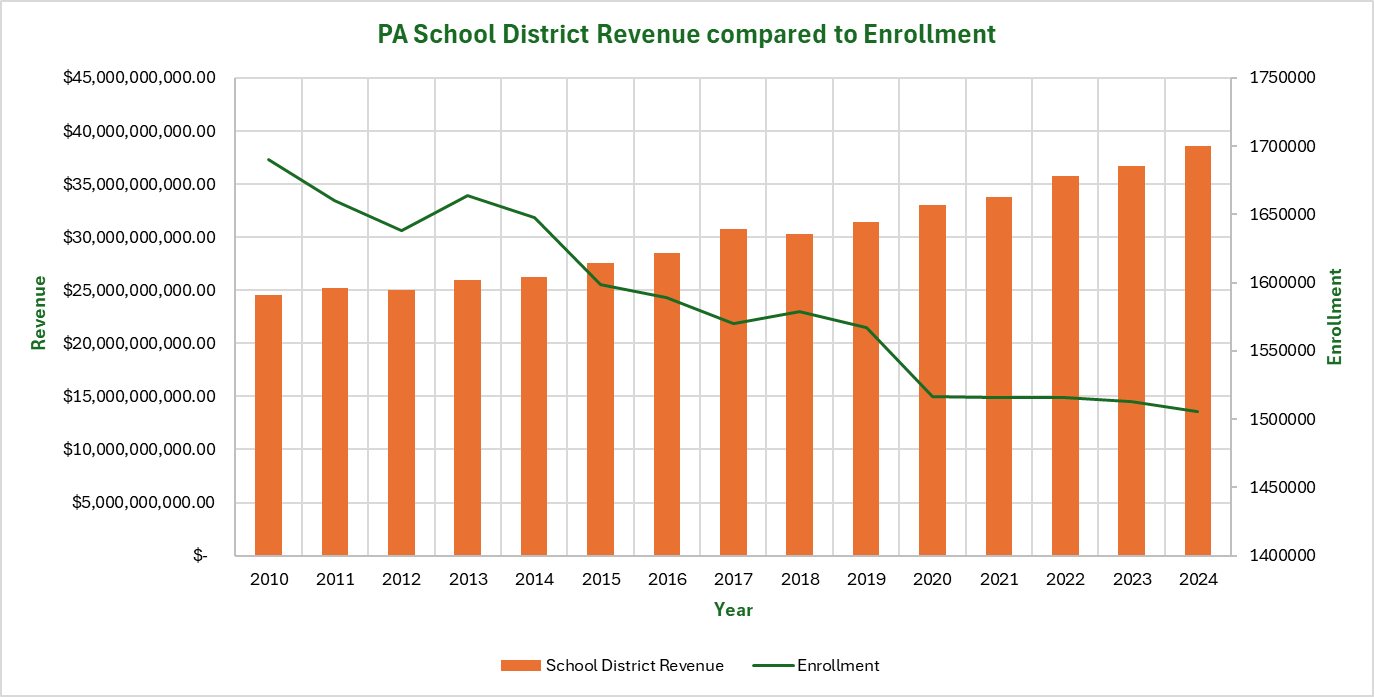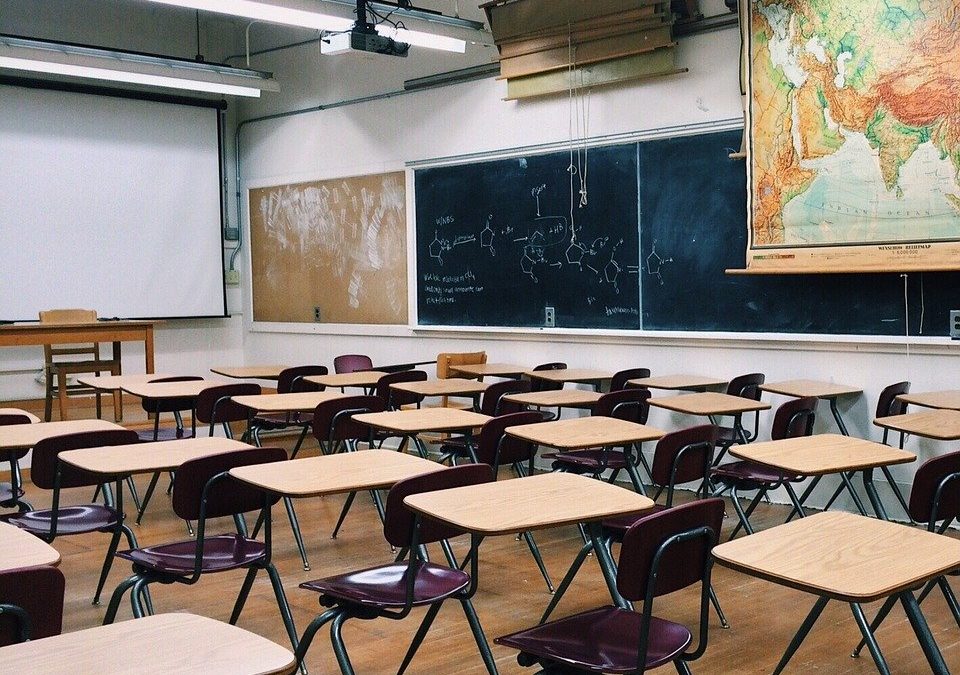Beth Ann Rosica: Billions in reserves, fewer students, falling scores — and Shapiro wants more
Despite the historic increases in education funding at the federal, state, and local levels, basic student proficiency in Pennsylvania is abysmal, and the Governor is asking for yet more education funding, proposing a $75 million (or one percent) increase in this year’s budget.
Only 53 percent of Pennsylvania public school students are proficient in reading and just over 40 percent are proficient in math, while education funding continues to increase and student enrollment declines.
Over the last fifteen years, Pennsylvania school district’s revenues have increased by a staggering $14 billion at the same time that enrollment decreased by eleven percent.

Perhaps equally concerning is the fact that school districts continue to hold large sums in their fund balances while claiming to need additional revenue. The Commonwealth Foundation reports the majority of school districts in the state maintain large fund balances, also known as reserves, while simultaneously raising taxes.
Over two years ago, the Pennsylvania Auditor General raised the alarm on districts hoarding funds with a lengthy report criticizing the practices of twelve districts. While there were no findings of illegal activity, the report concluded that districts were “adhering to the letter of the law and not the intent of the law” when raising taxes.
The chart below shows the totals of school district reserves, school district revenues, and enrollment by year, starting in 2010 through 2024. Over the fifteen year period, not only have reserves and funding grown steadily, the percentage of reserves nearly doubled. In 2010, ten percent of all district funding was held in reserve, while in 2024, almost twenty percent was sitting in the fund balance. For the same years, overall public school enrollment dropped eleven percent with over 184,000 students leaving the system.
| Year | School District fund balances (reserves) | School District Funding (from all sources) | Enrollment |
| 2010 | $2,513,407,230 | $24,590,114,232 | 1,690,590 |
| 2011 | $2,823,927,023 | $25,203,967,188 | 1,660,291 |
| 2012 | $3,292,429,459 | $25,030,564,336 | 1,638,213 |
| 2013 | $3,538,705,609 | $26,004,969,178 | 1,663,542 |
| 2014 | $3,983,887,256 | $26,217,725,426 | 1,647,832 |
| 2015 | $4,089,870,382 | $27,578,286,252 | 1,598,728 |
| 2016 | $4,280,395,834 | $28,494,057,231 | 1,588,866 |
| 2017 | $4,406,662,346 | $30,750,835,731 | 1,570,061 |
| 2018 | $4,545,490,403 | $30,281,513,991 | 1,579,202 |
| 2019 | $4,609,841,052 | $31,415,233,572 | 1,566,855 |
| 2020 | $4,591,386,714 | $33,013,931,651 | 1,516,271 |
| 2021 | $5,285,447,314 | $33,751,168,321 | 1,515,928 |
| 2022 | $5,947,500,582 | $35,780,540,459 | 1,515,574 |
| 2023 | $6,811,606,424 | $36,682,122,184 | 1,512,575 |
| 2024 | $7,368,879,024 | $38,588,498,962 | 1,505,713 |
Based on these numbers, it is hard to justify why school districts need more funding. Many districts are already sitting on large reserves, while at the same time, they are losing students to private schools and homeschooling.
If reading and math proficiency were improving, Governor Shapiro might be able to make a case that more money solves the problem, but that is certainly not happening in the Commonwealth.
In 2017, the state developed a goal with interim targets to “reduce, by half, the statewide percentage of non-proficient students on state assessments by the end of the 2032-33 school year.” According to their timetable, the 2024 goal for English Language Arts proficiency was over 70 percent of students and for Math it was close to 56 percent.
Clearly, Pennsylvania is far behind its stated goals with only 53 percent proficient in English Language Arts and 40 percent in Math in 2024. As a matter of fact, the baseline data from 2017 shows that more students were proficient in English Language Arts and Math seven years ago than today!
The state can attempt to blame the extended school closures for the significant decreases in proficiency from 2017, but it was, in fact, responsible for locking students out of school for a significant amount of time.
It is astonishing to think that over a seven year period from 2017 to 2024, proficiency in English Language Arts dropped from 61.6 percent to 53 percent and in Math from 43 percent to 40 percent — and during this period, there were unprecedented education funding levels.
The bottom line is Pennsylvania spends more money than most states in education funding with a very low return on investment. The Commonwealth is not only not on track to meet its own proficiency goals, but the outcomes are moving in the wrong direction.
Neither the Governor’s office nor the Pennsylvania Department of Education responded to a request for comment asking why the one percent education funding increase is necessary.
With the June 30 budget deadline looming, constituents and lawmakers are looking to Shapiro to fulfill his commitment to “get sh** done.” However if past performance is any indication of future outcomes, it is highly unlikely the budget will pass prior to the deadline as Shapiro has never met the deadline since taking office.
Based on a recent poll by the Commonwealth Foundation, a majority of Pennsylvanians believe Shapiro needs to work harder to secure a bipartisan budget that does not include massive increases, including the $75 million for education funding.
“57 percent oppose Governor Shapiro’s $51.5 billion budget proposal, resulting in a $4.8 billion deficit which will cost Pennsylvania families nearly $2,000 for a family of four.”
While a one percent increase for education funding may not sound like a lot of money, legislators cannot continue to increase the budget year over year and stick the taxpayers with this burden — especially with such poor results for our students.
Beth Ann Rosica resides in West Chester, has a Ph.D. in Education, and has dedicated her career to advocating on behalf of at-risk children and families. She covers education issues for Broad + Liberty. Contact her at barosica@broadandliberty.com.




